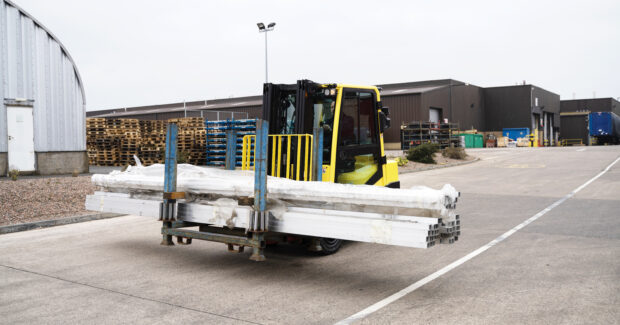Optimizing Your Forklift Fleet: A Three-step Plan
It is important to recognize that fleet management is not a one-time decision or activity, but an ongoing, collaborative process.
Posted: August 28, 2024

Although the myriad disruptions at the start of the 2020s are, for the most part, behind us, supply chains are still facing intense pressure to maximize efficiency and control costs. As government emissions targets, labor challenges, and the advancement of data and automation change how they move goods, manufacturing and heavy-duty industries like metalworking, in particular, are facing a time of great transition.
This challenging backdrop demands a lean, mean forklift fleet to help companies protect slim margins and get the job done. Businesses can achieve a lower total cost of ownership through rightsizing their fleet, identifying avoidable expenses and standardizing labor rates, parts pricing and planned maintenance practices. An effective way to do this is to introduce a fleet management program to gain better visibility into their fleet and identify associated costs.
Fleet management is not a one-time decision or activity, but an ongoing, multi-step process designed to optimize all aspects of the forklift fleet.
Step 1: Determine a Baseline
A fleet management program typically begins with a thorough site survey to establish a baseline and understand areas of opportunity for optimization, including:
- Truck information: Type, age, condition, duty cycle and annual hours of use.
- Application information: Where and how the trucks are used.
- Service processes: Regular planned maintenance and unexpected, urgent service issues.
- Budget and billing approaches: Maintenance program types and budgets, and truck financing/leasing.

Lift truck telemetry systems can be a valuable tool for setting fleet optimization priorities. By gathering data 24/7, providing real-time access to information and issuing proactive updates, these systems can help managers monitor truck and fleet status.
Designed to evaluate fleet utilization, impacts, idle time and maintenance, lift truck telemetry systems offer fleet managers the ability to make quick and informed decisions about fleet size, composition and use. Features such as fault code tracking, impact sensing and planned periodic maintenance allow companies to get the most out of their existing assets, which can lengthen the life of their fleet and allow for trucks to run longer between repairs, which in turn helps to reduce downtime and overall cost of operations.
Capturing the reasons and categories for lift truck repairs is important to future savings. It enables analysis of service data, and in particular, segmentation of instances considered normal planned maintenance from those which could be considered avoidable. A data-driven, detailed understanding can inform strategies, such as additional operator training and coaching or an enhanced component or truck option that may be warranted, to help reduce avoidable service events. For example, analysis can identify problems such as flat-spotted tires, which could be related to operator behaviors like aggressive cornering or braking.
In aid of effective planned maintenance, a telemetry system can be used to:
- Store and log fault alerts for follow-up action during routine maintenance.
- Track planned periodic maintenance based on custom parameters.
- Track planned maintenance intervals and service requirements across diverse truck fleets.
- Track service history and maintenance forecast over time to determine both fleet and individual truck needs.
Telemetry can also help operations better manage and digitize processes like pre-shift OSHA checklists. These checklists prompt operators to perform mandatory equipment checks before each shift.
Step 2: Make Recommendations
With the overall assessment complete, a fleet management team provides recommendations across several focus areas, including an optimal composition for the core, flex, standby and seasonal segments of the fleet. A proper fleet composition evaluation will typically include a cost analysis for each existing lift truck unit and ultimately a repair, replace or retire recommendation for each.
For some operations, rental units can be the most practical way to scale for peak demands, without unnecessarily paying for trucks beyond their base needs. If rental trucks are a part of the recommendation, rental rates are often reflected to help operations make informed decisions about temporarily increasing their capacity.
Standby trucks, another segment separate from the core, fully utilized fleet, can help operations fill gaps in capacity caused by trucks that are out of service due to planned maintenance or an unplanned outage.
Step 3: Define Success
Measuring results and communicating their impact throughout the organization is essential. Apart from savings, some metrics to consider include:
- Planned maintenance (PM) completion rate.
- Average service response time.
- Average days to repair.
- First-time fix success rate.
- Uptime versus downtime percentage.
- Fleet cost per hour.
- Cost of avoidable damage.
Fleet Management Never Stops
Whether the goal is lower total cost, streamlined service and improved productivity or more informed, data-driven management decisions, it’s important to recognize that fleet management is not a one-time decision or activity, but an ongoing, collaborative process. The success of a program rests on a robust collaboration. Through regular reporting and reviews, businesses can structure their forklift fleets to maximize value and efficiency.

















